“Here you leave today and enter the worlds of yesterday, tomorrow, and fantasy.” Since 1955, those words have welcomed guests into Disneyland, and their spirit pervades Disney theme parks across the globe. Filled with artistry, history, and memories, each of them is, in some ways, alive, with its own unique personality.
At Park Lore, I’ve been working on a very, very niche personal art project that I’m excited to finally share: a look at the histories and personalities of the theme parks we love… as told by their pathways. Made possible by the support of Park Lore members, each of the hand-drawn illustrations you’ll find below is part mathematical model, part artistic abstraction; colorful lines that would be meaningless to most, but that can be mapped with memories for some! I sure hope they connect with you and inspire you to see each park’s story in a new light…
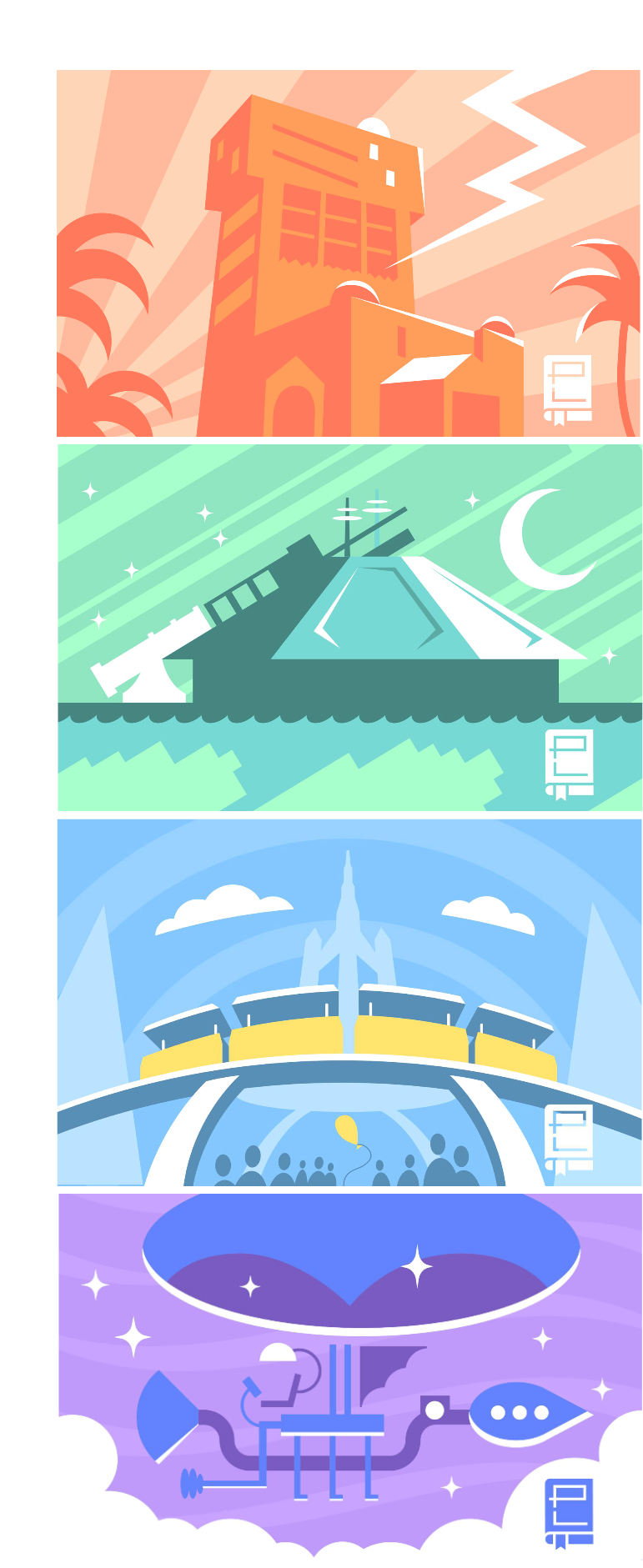
Each of the illustrations you’ll find in this Park Lore Special Feature are hand-drawn with a lot of time and love! I invite you to tap each to zoom in and explore, but – since Park Lore is a Member-supported, ad-free project run all on my own – please be kind and cite, link to, or tag Park Lore (@themeparklore) if you share them.
You can buy prints of the “Park Paths” designs on my store!
If you appreciate Park Lore’s in-depth, ad-free, quality-over-quantity theme park storytelling and analysis, become a supporting Member for as little as $2 / month to unlock rare concept art in every story and access 100+ Extra Features!
The “Castle Parks“
Disneyland Park (Anaheim, California)
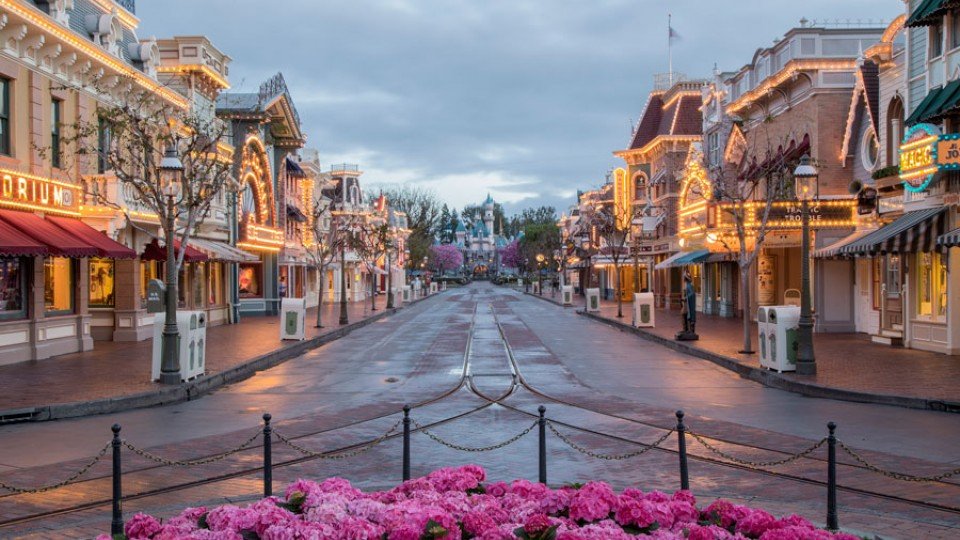
Opened: July 17, 1955
Background: Disneyland is a work of art. In this first-of-its-kind, master-planned destination, Walt Disney and his early designers literally wrote the rules of the modern “theme park.” A model of urban planning and design, Disneyland pioneered the “hub-and-spokes” layout that all “Castle Parks” share, where guests pass through a single entry and are directed to a Central Plaza. From there, paths diverge like spokes on a wheel. The ingenious orientation ensures that – via the “Hub” – visitors are never too far from even the farthest point.
In retrospect, it’s easy to see that Disneyland was also charmingly naive. The park’s planners were quite literally making it up as they went. Walt himself was known to pull stakes out of the ground and reroute paths just before they were cemented! Sixty-plus years later, Disneyland is still hallowed ground, and Walt’s presence and the park’s mid-century scale are still its defining features. Disneyland’s personality and history are told through a look at its paths…

Pathways: To see Disneyland’s meandering paths, diminutive lands, and nooks & crannies is to see a park that’s either beautifully chaotic or chaotically beautiful. Solutions abound at every turn, and just about every square foot of the landlocked park’s real estate is spoken for. Despite being one of the smallest Disney Parks on Earth, Disneyland contains more rides (with more of them ranked as E-Tickets) than any other, by far.
The paths of Disneyland Park reveal a park that’s organic. Its walkways “flow” around attractions and environments. They narrow and expand, branching like arteries that sweep through the park, pouring through lands like water. Fans call the park “cozy” while detractors call it “cramped.” But Disneyland’s scale is what make it feel quaint, warm, and charming, and its paths are evidence of its history and its growth. Even from above, it looks comfortable, laid-back, and natural.
Disneyland spent much of 2018 and 2019 littered with mini construction projects as part of “Project Stardust” – an infrastructure initiative meant to prepare the park’s tiny paths for the crushing crowds that Star Wars: Galaxy’s Edge was expected to attract. Across the park, planters receded, benches disappeared, and paths were widened in an attempt to add even the odd square foot or two at infamous pinch points. Ultimately, Galaxy’s Edge solved one of the park’s most frustrating crowd flow problems by turning the dead end that had been Critter Country into a loop around the northern edge of the Rivers of America.
Magic Kingdom (Orlando, Florida)
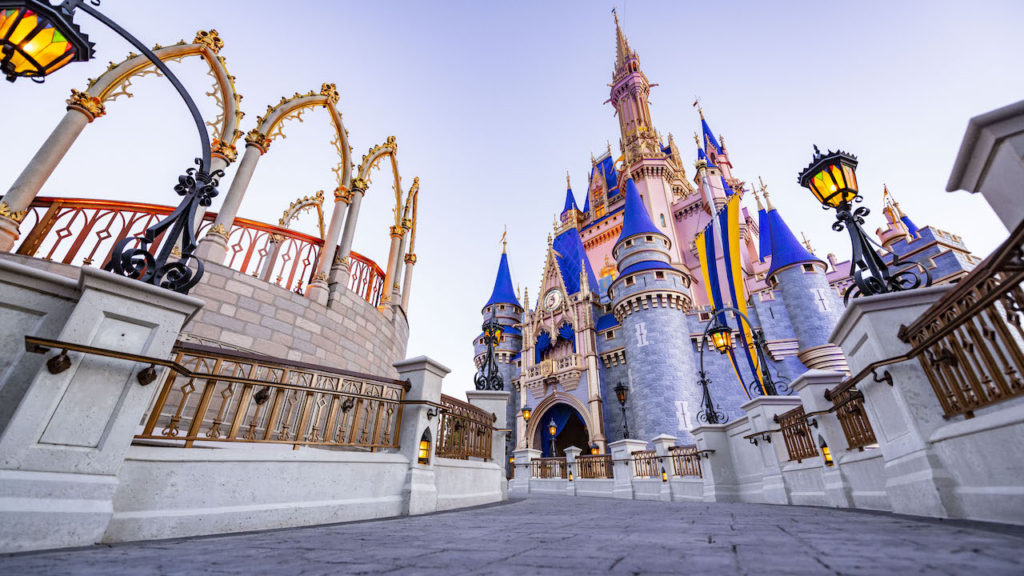
Opened: October 1, 1971
Background: Magic Kingdom opened in 1971 – 16 years after Disneyland – and though the two parks are obviously sisters, they sure aren’t twins! Designed with the benefit of hindsight (not to mention nearly unlimited land and budget), Magic Kingdom was a chance to tweak the “Castle Park” model, cementing what had been sketched out through the ’60s in Disneyland… and fixing its shortfalls.
Pathways: Walt Disney World’s first park, then, was built with “Vacation Kingdom of the World” crowds in mind. The meandering, organic, narrow paths of Disneyland were replaced by broad straightaways, geometric corridors, and wayfinding plazas. Looking at Magic Kingdom’s pathways is like looking at a snowflake, filled with symmetry and geometry. There’s a clear, intuitive navigational flow to the park; a circulating route that channels guests from landmark to landmark with straightaway shortcuts and direct routes built for backtracking.
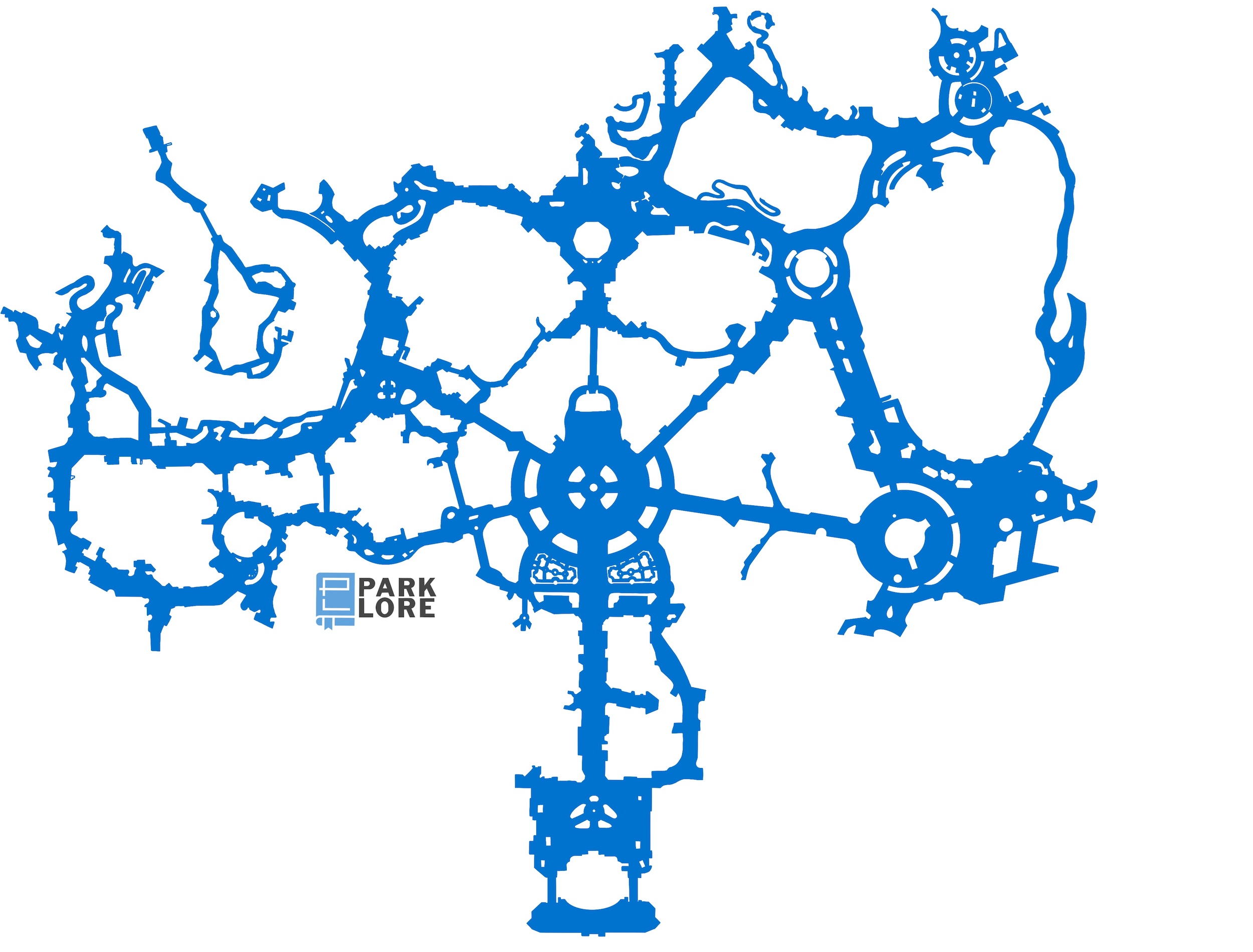
Unlike Disneyland with its branching Critter Country, Galaxy’s Edge, and Toontown, Magic Kingdom can more or less be swept through along a single concourse, departing from the Hub at the 8:30 position and returning at 3:30, or vice versa.
Compared to Disneyland’s “coziness,” Magic Kingdom is sometimes accused of being “corporate;” vast, concrete, and impersonal. From above, though, it’s probably fairer to call it “efficient.” That was Magic Kingdom’s contribution to the Disney Parks story, after all. It’s a park that figured out how to take the dreaminess of Disneyland and factor in capacity, logistics, and operations. And aside from a few pinch points, it still works!
Member Extra: What’s especially interesting, though, is how Disneyland and Magic Kingdom compare. Join Park Lore for free or as a supporting Member for $2 a month or more to unlock the sliding imagine comparison below, where you can see a to-scale comparison of Disneyland and Magic Kingdom overlaid atop one another!
Sliding between Disneyland and Magic Kingdom reveals so much about the parks’ similarities and differences – and by extention, what was learned and intentionally, consciously changed in the decade between the two parks’ developments.
Tokyo Disneyland (Urayasu, Japan)
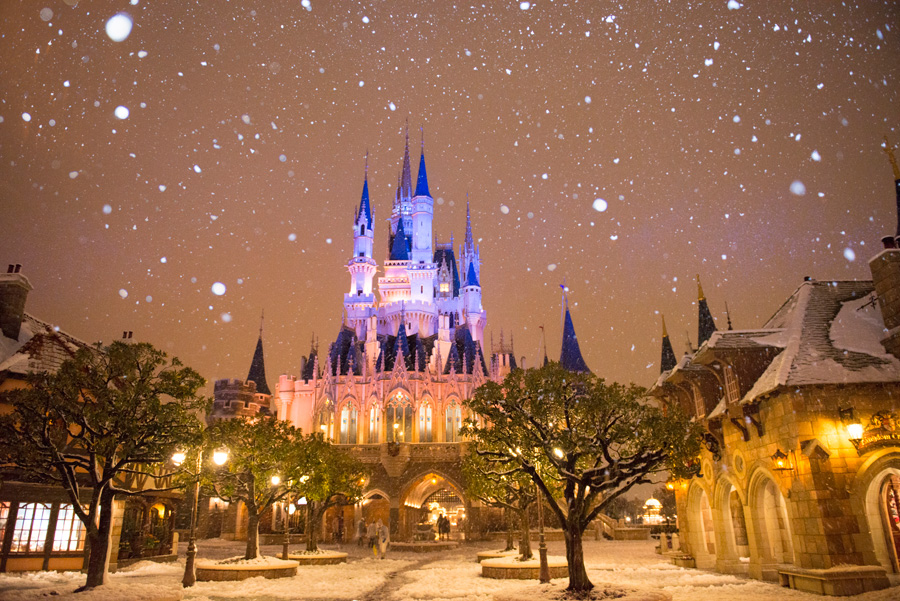
Opened: April 15, 1983
Background: In 1978, Walt Disney Productions was contacted by a Japanese land management operation called the Oriental Land Company, who wanted to finance the construction of a Disneyland in Tokyo.
The most unusual part of the request? The OLC had no interest in “adapting” or “translating” the very, very American concept and contents of Disneyland and Magic Kingdom to suit Japanese audiences. Just the opposite: they wanted a near-clone of Magic Kingdom (with the best of Disneyland sprinkled in), with all the Americana in tact – the same Cinderella Castle, the same Frontierland, the same Adventureland, even a Space Age Tomorrowland of mid-century modern architecture.
Obviously, they had the right sense. Tokyo Disneyland has penetrated deep into Japanese culture, and routinely ranks as the second most-visited theme park on Earth annually (occasionally swapping places with number three, the original Disneyland). Thankfully, the efficiencies of Magic Kingdom were taken to the extreme in the construction of Tokyo Disneyland…
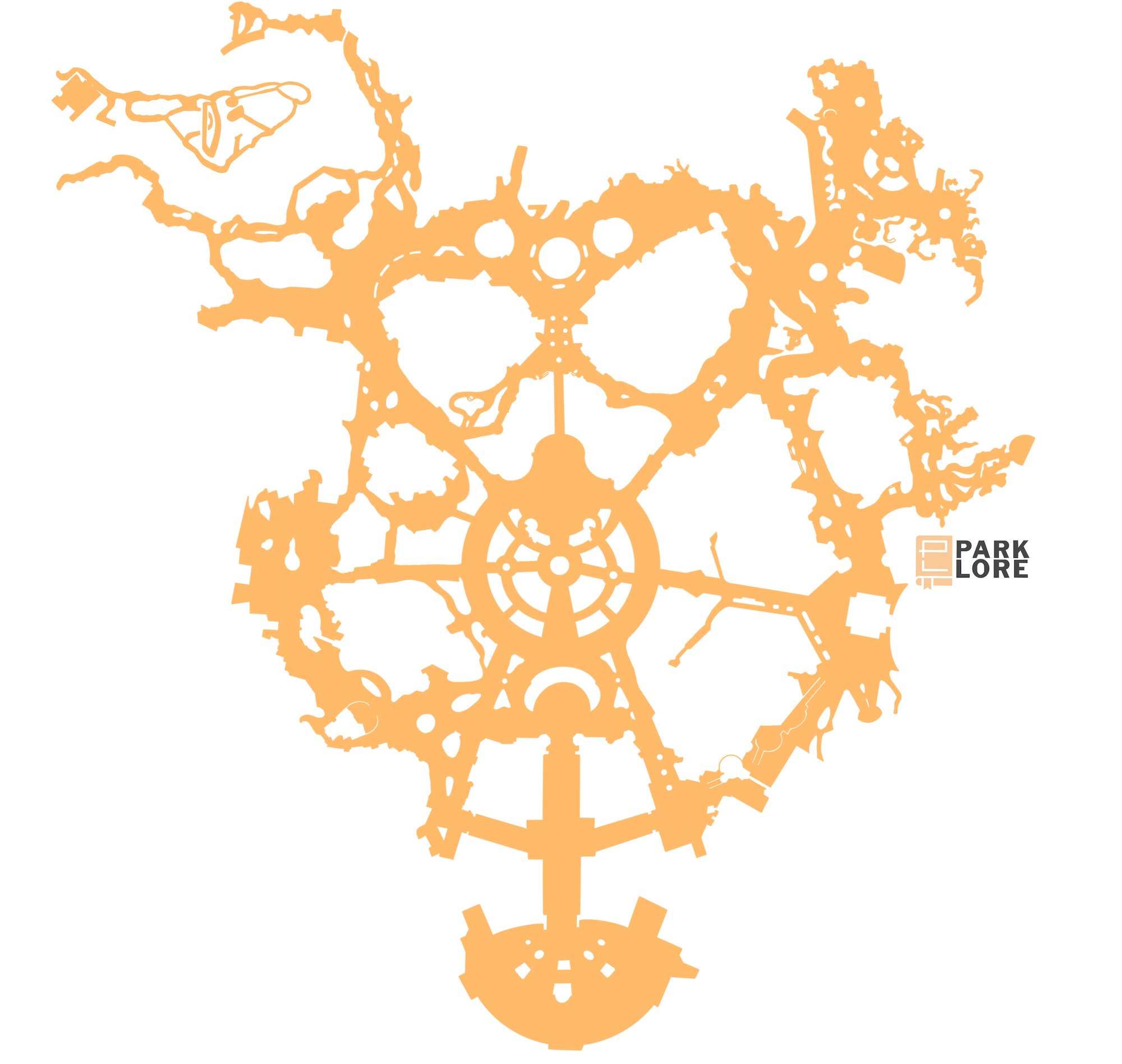
Pathways: The easiest way to identify Tokyo Disneyland from its silhouette alone is by its ultra-efficiency. Very, very few spaces in the park could be called “intimate.” Tokyo Disneyland is defined by its wide paths and plazas meant to absorb, distribute, and move enormous crowds. Adventureland is less a jungle per se, and more a midway dotted with planters; Fantasyland is even more wide open than Florida’s; Tomorrowland is three supersized midways that converge on Space Mountain (given prominent placement since Tokyo’s was the first “Castle Park” built with the ride standard in the lineup).
Tokyo Disneyland’s massive Central Plaza (which served as a basis for Magic Kingdom’s 2014 Hub expansion) is more of an arena than a park-like promenade. If you squint, you might imagine that there’s an even larger, concentric “Hub” that begins halfway through World Bazaar (the park’s covered Main Street equivalent) making the entire park one gigantic wheel with almost no dead ends. About the only part of the park that becomes a little smaller in scale is 2020’s New Fantasyland expansion with its broken up, meandering paths and Belle’s provincial village.
That makes Tokyo Disneyland the polar opposite of our next “Castle Park”…



